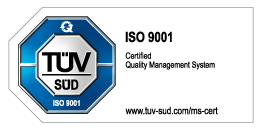Electric Locomotive.
Prototype: Swiss Federal Railways (SBB/CFF/FFS) class De 6/6. "Seetal Crocodile", locomotive as it looked around 1953. Use: Freight and passenger trains on branch lines.
Most Important Facts
| Article No. | 22329 |
|---|---|
| Gauge / Design type | Trix H0 / |
| Era | III |
| Kind | Electric Locomotives |
Check with your local dealer Find Dealer
-
Product description
Model: Era III, the locomotive has a die-cast metal body and frame. It has a connector for a digital decoder. The locomotive has a 5-pole motor with a flywheel; the motor is centrally mounted. 6 axles powered. 2 traction tires. The locomotive has an articulated frame to enable it to negotiate sharp curves. The headlights and the Swiss marker light are LED's. Separately applied metal grab irons. The brake hoses and prototype couplers can be installed on the buffer beams. NEM coupler pockets.
Length over the buffers 16.2 cm / 6-3/8".
An AC version of this model is available in the Märklin assortment as item no. 37522.
Spare parts for our articles can be found here in our spare parts search.
-
Publications
- New Items 2005 - Main Catalog 2006
-
Prototype information
The routes of the Swiss Seetal Railroad near Wildegg and Beromünster were electrified from 1910 to 1930 with 5.5 kilovolts / 25 Hertz, a leftover from the private railroad era. With nationalization in 1922 the SBB decided to standardize the catenary power system and to purchase a new locomotive. The three De 6/6 engines delivered in 1926 were already equipped for the normal 15 kilovolt / 16 2/3 Hertz catenary power system. The "Seetal Crocodile" earned its name: The design of the running gear was for the most part the same as the famous SBB locomotives. Two groups of driving wheels (without pilot trucks in this case) supported a three-piece body. However, because the Seetal locomotives had to be able to negotiate sharper curves and be lighter in weight, suitable mechanical components were used from the small Ee 3/3 switcher, which was built parallel to the Seetal locomotives. Each group of driving axles was powered by a motor though a jackshaft and side rods; the total power was 850 kilowatts / 1,140 horsepower, which made it possible to achieve 50 km/h or 31 mph. A characteristic feature of these locomotives was the large air inlets on the motor side for cooling the transformers, and the single pantograph. The 3 small crocodiles were originally brown and were painted green in the 1950s. They spent their last years of service until 1983 in the brown paint scheme again.




